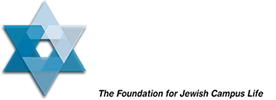An Israeli designer has combined Hebrew and Arabic to form an entirely new script to bridge the cultural gap between Israeli Jews and Arabs.
Liron Lavi Turkenich, a young graphic design instructor at Jerusalem’s Bezalel Academy of Art, has designed a new alphabet by merging the 22 Hebrew letters with the 29 letters in the Arabic alphabet. Arabic readers can understand the script by reading the top half, while Hebrew readers can understand the bottom half.
Called “Aravrit” (fusing the Hebrew words for “Arabic” and “Hebrew”), the new script was born out of the designer’s observation that although the two languages coexist in Israel, many people ignore the one they cannot read.
To achieve this, she created a different letter for every possible combination of Hebrew letters and Arabic letters. Arabic, however, has four forms of each letter depending on whether the letter is at the start, middle, end, or separate from a word. She already has 638 letters that use the separate form, and she is working on expanding the alphabet to include connected forms of the Arabic letters.
With these 638 letters, Turkenich is able to write a word in Aravrit in a way that incorporates both the Arabic and Hebrew words. For example, ‘peace’ in Aravrit would say ‘salaam’ on the top half and ‘shalom’ on the bottom half.
Aravrit has been incredibly popular. A video about the script that was recently published on Facebook has received over 1.2 million “likes” and comments, and the concept has sparked a lot of discussion. The script was also featured at the Museum of Islamic and Near Eastern Cultures in Be’er Sheva, and displayed in exhibitions in Jerusalem.
“I think people really like it because they feel like they’ve solved a riddle,” says Turkenich.
The integration of the two languages makes a lot of sense. Both Arabic and Hebrew belong to the Semitic language family, which means they have many similarities. They share the same vocabulary structure, they are read from right to left, and have some similar pronunciations.
The significance of combining the languages extends far deeper than aesthetic design, and could bring together the various populations in Israel.
“The first thing is just to bring up the discussion – people start to talk about this, and the presence of Arabic in our surroundings,” Turkenich explains. “I think this is the power of language, the fact that it is so daily.”
Until Next time…
Or

